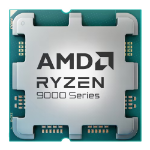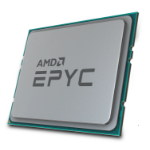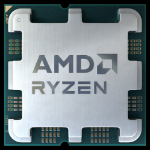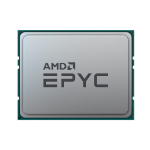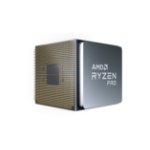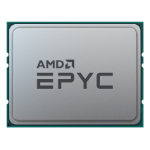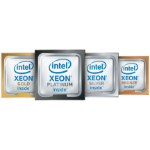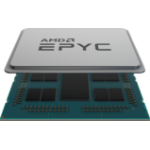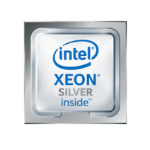We use cookies to make your experience better.
To comply with the new e-Privacy directive, you agree to the privacy policy and our use of cookies.
Intel Core i5-10500 processor 3.1 GHz 12 MB Smart Cache Box
SKU
BX8070110500
£436.08
In stock
Intel® Core™ i5-10500 Processor (12M Cache, up to 4.50 GHz)
Category: Processors
| Processor socket | LGA 1200 (Socket H5) |
|---|---|
| Box | Yes |
| Processor cores | 6 |
| Processor family | Intel Core i5 |
| EAN | 5032037187114 |
| Manufacturer | Intel |
| Availability | Y |
| Product Family | Core |
| Product Series | i5 |
Intel® Trusted Execution Technology
Intel® Trusted Execution Technology for safer computing is a versatile set of hardware extensions to Intel® processors and chipsets that enhance the digital office platform with security capabilities such as measured launch and protected execution. It enables an environment where applications can run within their own space, protected from all other software on the system.
Intel® Virtualization Technology for Directed I/O (VT-d)
Intel® Virtualization Technology for Directed I/O (VT-d) continues from the existing support for IA-32 (VT-x) and Itanium® processor (VT-i) virtualization adding new support for I/O-device virtualization. Intel VT-d can help end users improve security and reliability of the systems and also improve performance of I/O devices in virtualized environments.
Intel® Virtualization Technology (VT-x)
Intel® Virtualization Technology (VT-x) allows one hardware platform to function as multiple “virtual” platforms. It offers improved manageability by limiting downtime and maintaining productivity by isolating computing activities into separate partitions.
Intel® 64
Intel® 64 architecture delivers 64-bit computing on server, workstation, desktop and mobile platforms when combined with supporting software.¹ Intel 64 architecture improves performance by allowing systems to address more than 4 GB of both virtual and physical memory.
Intel® Clear Video HD Technology
Intel® Clear Video HD Technology, like its predecessor, Intel® Clear Video Technology, is a suite of image decode and processing technologies built into the integrated processor graphics that improve video playback, delivering cleaner, sharper images, more natural, accurate, and vivid colors, and a clear and stable video picture. Intel® Clear Video HD Technology adds video quality enhancements for richer color and more realistic skin tones.
Cache
CPU Cache is an area of fast memory located on the processor. Intel® Smart Cache refers to the architecture that allows all cores to dynamically share access to the last level cache.
Intel® AES New Instructions
Intel® AES New Instructions (Intel® AES-NI) are a set of instructions that enable fast and secure data encryption and decryption. AES-NI are valuable for a wide range of cryptographic applications, for example: applications that perform bulk encryption/decryption, authentication, random number generation, and authenticated encryption.
Intel® InTru™ 3D Technology
Intel® InTru™ 3D Technology provides stereoscopic 3-D Blu-ray* playback in full 1080p resolution over HDMI* 1.4 and premium audio.
Idle States
Idle States (C-states) are used to save power when the processor is idle. C0 is the operational state, meaning that the CPU is doing useful work. C1 is the first idle state, C2 the second, and so on, where more power saving actions are taken for numerically higher C-states.
Intel® Turbo Boost Technology
Intel® Turbo Boost Technology dynamically increases the processor's frequency as needed by taking advantage of thermal and power headroom to give you a burst of speed when you need it, and increased energy efficiency when you don’t.
Max Turbo Frequency
Max Turbo Frequency is the maximum single-core frequency at which the processor is capable of operating using Intel® Turbo Boost Technology and, if present, Intel® Turbo Boost Max Technology 3.0 and Intel® Thermal Velocity Boost. Frequency is typically measured in gigahertz (GHz), or billion cycles per second.
Execute Disable Bit
Execute Disable Bit is a hardware-based security feature that can reduce exposure to viruses and malicious-code attacks and prevent harmful software from executing and propagating on the server or network.
Intel® Hyper-Threading Technology
Intel® Hyper-Threading Technology (Intel® HT Technology) delivers two processing threads per physical core. Highly threaded applications can get more work done in parallel, completing tasks sooner.
Instruction Set
An instruction set refers to the basic set of commands and instructions that a microprocessor understands and can carry out. The value shown represents which Intel’s instruction set this processor is compatible with.
Intel® Quick Sync Video
Intel® Quick Sync Video delivers fast conversion of video for portable media players, online sharing, and video editing and authoring.
Intel vPro® Platform Eligibility
The Intel vPro® platform is a set of hardware and technologies used to build business computing endpoints with premium performance, built-in security, modern manageability and platform stability.
Intel® VT-x with Extended Page Tables (EPT)
Intel® VT-x with Extended Page Tables (EPT), also known as Second Level Address Translation (SLAT), provides acceleration for memory intensive virtualized applications. Extended Page Tables in Intel® Virtualization Technology platforms reduces the memory and power overhead costs and increases battery life through hardware optimization of page table management.
Intel® Optane™ Memory Supported
Intel® Optane™ memory is a revolutionary new class of non-volatile memory that sits in between system memory and storage to accelerate system performance and responsiveness. When combined with the Intel® Rapid Storage Technology Driver, it seamlessly manages multiple tiers of storage while presenting one virtual drive to the OS, ensuring that data frequently used resides on the fastest tier of storage. Intel® Optane™ memory requires specific hardware and software configuration.
Enhanced Intel SpeedStep® Technology
Enhanced Intel SpeedStep® Technology is an advanced means of enabling high performance while meeting the power-conservation needs of mobile systems. Conventional Intel SpeedStep® Technology switches both voltage and frequency in tandem between high and low levels in response to processor load. Enhanced Intel SpeedStep® Technology builds upon that architecture using design strategies such as Separation between Voltage and Frequency Changes, and Clock Partitioning and Recovery.
Intel® Clear Video Technology
Intel® Clear Video Technology is a suite of image decode and processing technologies built into the integrated processor graphics that improve video playback, delivering cleaner, sharper images, more natural, accurate, and vivid colors, and a clear and stable video picture.
Secure Key
Intel® Secure Key consists of a digital random number generator that creates truly random numbers to strengthen encryption algorithms.
Intel® Turbo Boost Technology 2.0 Frequency
Intel® Turbo Boost Technology 2.0 Frequency is the maximum single core frequency at which the processor is capable of operating using Intel® Turbo Boost Technology. Frequency is typically measured in gigahertz (GHz), or billion cycles per second.
Intel® Software Guard Extensions (Intel® SGX)
Intel® Software Guard Extensions (Intel® SGX) provide applications the ability to create hardware enforced trusted execution protection for their applications’ sensitive routines and data. Intel® SGX provides developers a way to partition their code and data into CPU hardened trusted execution environments (TEE’s).
Instruction Set Extensions
Instruction Set Extensions are additional instructions which can increase performance when the same operations are performed on multiple data objects. These can include SSE (Streaming SIMD Extensions) and AVX (Advanced Vector Extensions).
Intel® Turbo Boost Max Technology 3.0
Intel® Turbo Boost Max Technology 3.0 identifies the best performing core(s) on a processor and provides increased performance on those cores through increasing frequency as needed by taking advantage of power and thermal headroom.
Thermal Monitoring Technologies
Thermal Monitoring Technologies protect the processor package and the system from thermal failure through several thermal management features. An on-die Digital Thermal Sensor (DTS) detects the core's temperature, and the thermal management features reduce package power consumption and thereby temperature when required in order to remain within normal operating limits.
Intel® Thermal Velocity Boost
Intel® Thermal Velocity Boost (Intel® TVB) is a feature that opportunistically and automatically increases clock frequency above single-core and multi-core Intel® Turbo Boost Technology frequencies based on how much the processor is operating below its maximum temperature and whether turbo power budget is available. The frequency gain and duration is dependent on the workload, capabilities of the processor and the processor cooling solution.
Intel® Identity Protection Technology
Intel® Identity Protection Technology is a built-in security token technology that helps provide a simple, tamper-resistant method for protecting access to your online customer and business data from threats and fraud. Intel® IPT provides a hardware-based proof of a unique user’s PC to websites, financial institutions, and network services; providing verification that it is not malware attempting to login. Intel® IPT can be a key component in two-factor authentication solutions to protect your information at websites and business log-ins.
Intel® Stable IT Platform Program (SIPP)
The Intel® Stable IT Platform Program (Intel® SIPP) aims for zero changes to key platform components and drivers for at least 15 months or until the next generational release, reducing complexity for IT to effectively manage their computing endpoints.
Intel® Boot Guard
Intel® Device Protection Technology with Boot Guard helps protect the system’s pre-OS environment from viruses and malicious software attacks.
Intel® Transactional Synchronization Extensions
Intel® Transactional Synchronization Extensions (Intel® TSX) are a set of instructions that add hardware transactional memory support to improve performance of multi-threaded software.
Intel® Trusted Execution Technology for safer computing is a versatile set of hardware extensions to Intel® processors and chipsets that enhance the digital office platform with security capabilities such as measured launch and protected execution. It enables an environment where applications can run within their own space, protected from all other software on the system.
Intel® Virtualization Technology for Directed I/O (VT-d)
Intel® Virtualization Technology for Directed I/O (VT-d) continues from the existing support for IA-32 (VT-x) and Itanium® processor (VT-i) virtualization adding new support for I/O-device virtualization. Intel VT-d can help end users improve security and reliability of the systems and also improve performance of I/O devices in virtualized environments.
Intel® Virtualization Technology (VT-x)
Intel® Virtualization Technology (VT-x) allows one hardware platform to function as multiple “virtual” platforms. It offers improved manageability by limiting downtime and maintaining productivity by isolating computing activities into separate partitions.
Intel® 64
Intel® 64 architecture delivers 64-bit computing on server, workstation, desktop and mobile platforms when combined with supporting software.¹ Intel 64 architecture improves performance by allowing systems to address more than 4 GB of both virtual and physical memory.
Intel® Clear Video HD Technology
Intel® Clear Video HD Technology, like its predecessor, Intel® Clear Video Technology, is a suite of image decode and processing technologies built into the integrated processor graphics that improve video playback, delivering cleaner, sharper images, more natural, accurate, and vivid colors, and a clear and stable video picture. Intel® Clear Video HD Technology adds video quality enhancements for richer color and more realistic skin tones.
Cache
CPU Cache is an area of fast memory located on the processor. Intel® Smart Cache refers to the architecture that allows all cores to dynamically share access to the last level cache.
Intel® AES New Instructions
Intel® AES New Instructions (Intel® AES-NI) are a set of instructions that enable fast and secure data encryption and decryption. AES-NI are valuable for a wide range of cryptographic applications, for example: applications that perform bulk encryption/decryption, authentication, random number generation, and authenticated encryption.
Intel® InTru™ 3D Technology
Intel® InTru™ 3D Technology provides stereoscopic 3-D Blu-ray* playback in full 1080p resolution over HDMI* 1.4 and premium audio.
Idle States
Idle States (C-states) are used to save power when the processor is idle. C0 is the operational state, meaning that the CPU is doing useful work. C1 is the first idle state, C2 the second, and so on, where more power saving actions are taken for numerically higher C-states.
Intel® Turbo Boost Technology
Intel® Turbo Boost Technology dynamically increases the processor's frequency as needed by taking advantage of thermal and power headroom to give you a burst of speed when you need it, and increased energy efficiency when you don’t.
Max Turbo Frequency
Max Turbo Frequency is the maximum single-core frequency at which the processor is capable of operating using Intel® Turbo Boost Technology and, if present, Intel® Turbo Boost Max Technology 3.0 and Intel® Thermal Velocity Boost. Frequency is typically measured in gigahertz (GHz), or billion cycles per second.
Execute Disable Bit
Execute Disable Bit is a hardware-based security feature that can reduce exposure to viruses and malicious-code attacks and prevent harmful software from executing and propagating on the server or network.
Intel® Hyper-Threading Technology
Intel® Hyper-Threading Technology (Intel® HT Technology) delivers two processing threads per physical core. Highly threaded applications can get more work done in parallel, completing tasks sooner.
Instruction Set
An instruction set refers to the basic set of commands and instructions that a microprocessor understands and can carry out. The value shown represents which Intel’s instruction set this processor is compatible with.
Intel® Quick Sync Video
Intel® Quick Sync Video delivers fast conversion of video for portable media players, online sharing, and video editing and authoring.
Intel vPro® Platform Eligibility
The Intel vPro® platform is a set of hardware and technologies used to build business computing endpoints with premium performance, built-in security, modern manageability and platform stability.
Intel® VT-x with Extended Page Tables (EPT)
Intel® VT-x with Extended Page Tables (EPT), also known as Second Level Address Translation (SLAT), provides acceleration for memory intensive virtualized applications. Extended Page Tables in Intel® Virtualization Technology platforms reduces the memory and power overhead costs and increases battery life through hardware optimization of page table management.
Intel® Optane™ Memory Supported
Intel® Optane™ memory is a revolutionary new class of non-volatile memory that sits in between system memory and storage to accelerate system performance and responsiveness. When combined with the Intel® Rapid Storage Technology Driver, it seamlessly manages multiple tiers of storage while presenting one virtual drive to the OS, ensuring that data frequently used resides on the fastest tier of storage. Intel® Optane™ memory requires specific hardware and software configuration.
Enhanced Intel SpeedStep® Technology
Enhanced Intel SpeedStep® Technology is an advanced means of enabling high performance while meeting the power-conservation needs of mobile systems. Conventional Intel SpeedStep® Technology switches both voltage and frequency in tandem between high and low levels in response to processor load. Enhanced Intel SpeedStep® Technology builds upon that architecture using design strategies such as Separation between Voltage and Frequency Changes, and Clock Partitioning and Recovery.
Intel® Clear Video Technology
Intel® Clear Video Technology is a suite of image decode and processing technologies built into the integrated processor graphics that improve video playback, delivering cleaner, sharper images, more natural, accurate, and vivid colors, and a clear and stable video picture.
Secure Key
Intel® Secure Key consists of a digital random number generator that creates truly random numbers to strengthen encryption algorithms.
Intel® Turbo Boost Technology 2.0 Frequency
Intel® Turbo Boost Technology 2.0 Frequency is the maximum single core frequency at which the processor is capable of operating using Intel® Turbo Boost Technology. Frequency is typically measured in gigahertz (GHz), or billion cycles per second.
Intel® Software Guard Extensions (Intel® SGX)
Intel® Software Guard Extensions (Intel® SGX) provide applications the ability to create hardware enforced trusted execution protection for their applications’ sensitive routines and data. Intel® SGX provides developers a way to partition their code and data into CPU hardened trusted execution environments (TEE’s).
Instruction Set Extensions
Instruction Set Extensions are additional instructions which can increase performance when the same operations are performed on multiple data objects. These can include SSE (Streaming SIMD Extensions) and AVX (Advanced Vector Extensions).
Intel® Turbo Boost Max Technology 3.0
Intel® Turbo Boost Max Technology 3.0 identifies the best performing core(s) on a processor and provides increased performance on those cores through increasing frequency as needed by taking advantage of power and thermal headroom.
Thermal Monitoring Technologies
Thermal Monitoring Technologies protect the processor package and the system from thermal failure through several thermal management features. An on-die Digital Thermal Sensor (DTS) detects the core's temperature, and the thermal management features reduce package power consumption and thereby temperature when required in order to remain within normal operating limits.
Intel® Thermal Velocity Boost
Intel® Thermal Velocity Boost (Intel® TVB) is a feature that opportunistically and automatically increases clock frequency above single-core and multi-core Intel® Turbo Boost Technology frequencies based on how much the processor is operating below its maximum temperature and whether turbo power budget is available. The frequency gain and duration is dependent on the workload, capabilities of the processor and the processor cooling solution.
Intel® Identity Protection Technology
Intel® Identity Protection Technology is a built-in security token technology that helps provide a simple, tamper-resistant method for protecting access to your online customer and business data from threats and fraud. Intel® IPT provides a hardware-based proof of a unique user’s PC to websites, financial institutions, and network services; providing verification that it is not malware attempting to login. Intel® IPT can be a key component in two-factor authentication solutions to protect your information at websites and business log-ins.
Intel® Stable IT Platform Program (SIPP)
The Intel® Stable IT Platform Program (Intel® SIPP) aims for zero changes to key platform components and drivers for at least 15 months or until the next generational release, reducing complexity for IT to effectively manage their computing endpoints.
Intel® Boot Guard
Intel® Device Protection Technology with Boot Guard helps protect the system’s pre-OS environment from viruses and malicious software attacks.
Intel® Transactional Synchronization Extensions
Intel® Transactional Synchronization Extensions (Intel® TSX) are a set of instructions that add hardware transactional memory support to improve performance of multi-threaded software.
| Processor | |
|---|---|
| Processor generation | 10th gen Intel® Core™ i5 |
| Processor base frequency | 3.1 GHz |
| Processor manufacturer | Intel |
| Cooler included | Yes |
| Processor codename | Comet Lake |
| Memory bandwidth supported by processor (max) | 41.6 GB/s |
| Thermal Design Power (TDP) | 65 W |
| Processor cache | 12 MB |
| Processor ARK ID | 199277 |
| Processor model | i5-10500 |
| Processor threads | 12 |
| System bus rate | 8 GT/s |
| Processor operating modes | 64-bit |
| Processor boost frequency | 4.5 GHz |
| Component for | PC |
| Processor lithography | 14 nm |
| Processor family | Intel® Core™ i5 |
| Processor cores | 6 |
| Processor socket | LGA 1200 (Socket H5) |
| Processor cache type | Smart Cache |
| Generation | 10th Generation |
| Package type | Box |
| Memory | |
| Maximum internal memory supported by processor | 128 GB |
| Memory types supported by processor | DDR4-SDRAM |
| Memory clock speeds supported by processor | 2666 MHz |
| Memory bandwidth supported by processor (max) | 41.6 GB/s |
| Supported memory types | DDR4-SDRAM |
| Memory channels | Dual-channel |
| ECC | No |
| Graphics | |
| Discrete graphics card | No |
| On-board graphics card maximum resolution (DisplayPort) | 4096 x 2304 pixels |
| On-board graphics card ID | 0x9BC8 |
| On-board graphics card 4K support | Yes |
| On-board graphics card maximum resolution (eDP - Integrated Flat Panel) | 4096 x 2304 pixels |
| On-board graphics card refresh rate at maximum resolution (HDMI) | 30 Hz |
| On-board graphics card refresh rate at maximum resolution (DisplayPort) | 60 Hz |
| On-board graphics card refresh rate at maximum resolution (eDP - Integrated Flat Panel) | 60 Hz |
| Maximum on-board graphics card memory | 64 GB |
| Number of displays supported (on-board graphics) | 3 |
| On-board graphics card maximum resolution (HDMI) | 4096 x 2160 pixels |
| On-board graphics card DirectX version | 12.0 |
| On-board graphics card OpenGL version | 4.5 |
| On-board graphics card model | Intel® UHD Graphics 630 |
| On-board graphics card | Yes |
| On-board graphics card dynamic frequency (max) | 1150 MHz |
| On-board graphics card base frequency | 350 MHz |
| Discrete graphics card model | Not available |
| Maximum graphics card memory | 64 GB |
| Power | |
| Thermal Design Power (TDP) | 65 W |
| Technical details | |
| Intel Stable Image Platform Program (SIPP) | Yes |
| Thermal solution specification | PCG 2015C |
| Intel® Secure Key | Yes |
| Thermal Monitoring Technologies | Yes |
| Intel® Turbo Boost Technology | 2.0 |
| Intel Trusted Execution Technology | Yes |
| Intel® Quick Sync Video Technology | Yes |
| Intel® InTru™ 3D Technology | Yes |
| Intel® Identity Protection Technology (Intel® IPT) | Yes |
| Intel® Hyper Threading Technology (Intel® HT Technology) | Yes |
| Intel® Clear Video HD Technology (Intel® CVT HD) | Yes |
| Intel® AES New Instructions (Intel® AES-NI) | Yes |
| Idle States | Yes |
| Execute Disable Bit | Yes |
| Enhanced Intel SpeedStep Technology | Yes |
| PCI Express slots version | 3.0 |
| PCI Express configurations | 1x16, 2x8, 1x8+2x4 |
| Supported instruction sets | SSE4.1, SSE4.2, AVX 2.0 |
| Scalability | 1S |
| Intel VT-x with Extended Page Tables (EPT) | Yes |
| Embedded options available | No |
| CPU configuration (max) | 1 |
| Product type | Processor |
| Intel Virtualization Technology for Directed I/O (VT-d) | Yes |
| Intel 64 | Yes |
| Thermal Design Power (TDP) | 65 W |
| Supported memory types | DDR4-SDRAM |
| Status | Launched |
| Maximum resolution & refresh rate (DisplayPort) | 4096 x 2304@60Hz |
| Market segment | Desktop |
| Launch date | Q2'20 |
| Intel Virtualization Technology (VT-x) | Yes |
| Processor cache type | Smart Cache |
| Maximum memory | 128 GB |
| Maximum graphics card memory | 64 GB |
| Processor ID | 0x9BC8 |
| Bus speed | 8 GT/s |
| Target market | Gaming |
| Features | |
| On-board graphics card ID | 0x9BC8 |
| Maximum number of PCI Express lanes | 16 |
| Thermal Design Power (TDP) | 65 W |
| Processor package size | 37.5 x 37.5 mm |
| Processor ARK ID | 199277 |
| Thermal solution specification | PCG 2015C |
| Thermal Monitoring Technologies | Yes |
| Idle States | Yes |
| Execute Disable Bit | Yes |
| PCI Express slots version | 3.0 |
| PCI Express configurations | 1x16, 2x8, 1x8+2x4 |
| Supported instruction sets | SSE4.1, SSE4.2, AVX 2.0 |
| Scalability | 1S |
| Embedded options available | No |
| CPU configuration (max) | 1 |
| Market segment | Desktop |
| Harmonized System (HS) code | 85423119 |
| Export Control Classification Number (ECCN) | 5A992C |
| Commodity Classification Automated Tracking System (CCATS) | G077159 |
| PCI Express CEM revision | 3.0 |
| Processor special features | |
|---|---|
| Intel Clear Video Technology | Yes |
| Intel Software Guard Extensions (Intel SGX) | Yes |
| Intel Virtualization Technology for Directed I/O (VT-d) | Yes |
| Intel 64 | Yes |
| Intel Turbo Boost Max Technology 3.0 | No |
| Intel® Optane™ Memory Ready | Yes |
| Intel® OS Guard | Yes |
| Intel Stable Image Platform Program (SIPP) | Yes |
| Intel® Secure Key | Yes |
| Intel® Turbo Boost Technology | 2.0 |
| Intel Trusted Execution Technology | Yes |
| Intel® Quick Sync Video Technology | Yes |
| Intel® InTru™ 3D Technology | Yes |
| Intel® Identity Protection Technology (Intel® IPT) | Yes |
| Intel® Hyper Threading Technology (Intel® HT Technology) | Yes |
| Intel® Clear Video HD Technology (Intel® CVT HD) | Yes |
| Intel® AES New Instructions (Intel® AES-NI) | Yes |
| Enhanced Intel SpeedStep Technology | Yes |
| Intel VT-x with Extended Page Tables (EPT) | Yes |
| Intel Virtualization Technology (VT-x) | Yes |
| Intel® Boot Guard | Yes |
| Intel® Thermal Velocity Boost | No |
| Intel® vPro™ Platform Eligibility | Yes |
| Intel® Turbo Boost Technology 2.0 frequency | 4.5 GHz |
| Intel® Transactional Synchronization Extensions | No |
| Operational conditions | |
| Tjunction | 100 °C |
| Packaging data | |
| Package type | Box |
| Logistics data | |
| Harmonized System (HS) code | 85423119 |
| Weight & dimensions | |
| Processor package size | 37.5 x 37.5 mm |
| Other features | |
| Maximum internal memory | 128 GB |
| CPU configuration (max) | 1 |
You may also be interested in
| Product |
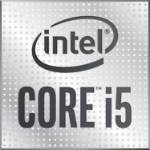
Bestseller
Intel Core i5-10500 processor 3.1 GHz...
£436.08
|
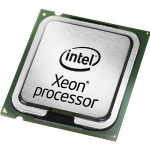
Popular
Fujitsu Xeon E5-2407V2 4C/4T 2.4GHz pr...
£493.58
|
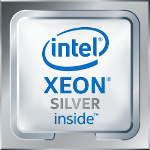 Intel Xeon 4209T processor 2.2 GHz 11...
Intel Xeon 4209T processor 2.2 GHz 11...
£606.61
|
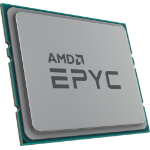
Recommended
AMD EPYC 7552 processor 2.2 GHz 192 MB...
£538.84
|
 AMD EPYC 7402 processor 2.8 GHz 128 MB...
AMD EPYC 7402 processor 2.8 GHz 128 MB...
£485.65
|
 AMD EPYC 7452 processor 2.35 GHz 128 M...
AMD EPYC 7452 processor 2.35 GHz 128 M...
£432.47
|
|---|---|---|---|---|---|---|
| SKU |
BX8070110500
|
S26361-F3828-L240
|
CD8069503956900
|
100-000000076
|
100-000000046
|
100-000000057
|
| Manufacturer |
Intel
|
Fujitsu
|
Intel
|
AMD
|
AMD
|
AMD
|
| Processor lithography |
up to 22nm
|
up to 22nm
|
up to 22nm
|
up to 22nm
|
up to 22nm
|
up to 22nm
|
| Processor cores |
6
|
4
|
8
|
48
|
24
|
32
|
| Cooler included |
Y
|
N/A
|
N
|
N
|
N
|
N
|
| Processor family |
Intel Core i5
|
Intel Xeon E5 v2
|
Intel Xeon Silver
|
AMD EPYC
|
AMD EPYC
|
AMD EPYC
|
| Processor socket |
LGA 1200 (Socket H5)
|
LGA 1356 (Socket B2)
|
LGA 3647 (Socket P)
|
Socket SP3
|
Socket SP3
|
Socket SP3
|
| On-board graphics card |
Y
|
N
|
N
|
N
|
N
|
N
|
| Discrete graphics card |
N
|
N/A
|
N
|
N
|
N
|
N
|
| Package type |
Box
|
N/A
|
Tray
|
Tray
|
Tray
|
Tray
|


